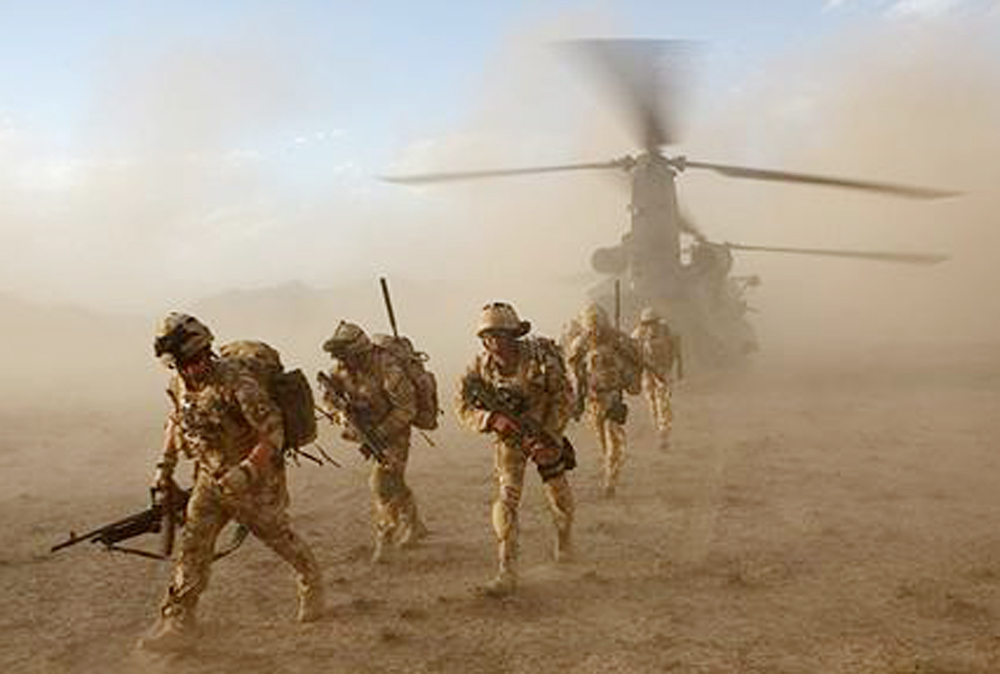The Cost of The 13 Year Afghan War
The cost of the thirteen year war in Afghanistan

NEW DELHI: Earlier this week, the last remaining British troops withdrew from Camp Bastion, Helmand province, signalling the end of 13 years of UK involvement in the war in Afghanistan. At least 453 British servicemen and women and at least 2200 members of the US military have died in Afghanistan since 2001.
While the reports of the deaths of foreign troops are well documented, the real cost of the 13 year Afghan war is in the civilian casualties in Afghanistan -- for which, there is no conclusive estimate.
Because civilian casualties are largely based on media reports, there is a wide discrepancy in the numbers. The United Nations Assistance Mission in Afghanistan (UNAMA), which is the oft-quoted source for civilian casualties in the country, has far more conservative estimates.
UNAMA began compiling civilian casualties relating to the war in Afghanistan since 2007, and estimates that 11,614 Afghan civilians have died since. However, given that UNAMA’s verification of deaths is based on a process that is “rigorous and time-consuming,” and is “affected by the security situation” in Afghanistan, these numbers -- pertaining to just half the period of conflict -- are in all probability, an underestimation.
While we will never know the exact number of Afghan civilians who have died since 2001 as a result of the conflict, nor their names, what is pertinent to note is that there has been, according to a new survey revealed by UNAMA, a “disturbing upward spiral” in the number of civilians killed and wounded in the troubled country. From January 1 to June 30, 2014, UNAMA documented 4,853 civilian casualties, up 24 per cent over the same period in 2013.
The report, titled the “2014 Mid-Year Report on Protection of Civilians in Armed Conflict” and prepared in coordination with the Office of the UN High Commissioner for Human Rights (OHCHR), notes that while civilian casualties caused by improvised explosive devices (IEDs) also increased to unprecedented levels over the same period in 2013, deaths and injuries caused by mortars, rocket-propelled grenades and small arms fire in ground engagements jumped dramatically as the frequency and intensity of these incidents increased in 2014, particularly in areas with concentrated civilian populations.
“The nature of the conflict in Afghanistan is changing in 2014 with an escalation of ground engagements in civilian-populated areas,” said the UN Special Representative for the Secretary-General in Afghanistan and head of UNAMA, Ján Kubiš. “The impact on civilians, including the most vulnerable Afghans, is proving to be devastating.”
Included in the toll were 1,564 civilian deaths (up 17 per cent) and 3,289 injuries (up 28 per cent). Ground engagements caused two of every five civilian casualties in 2014 accounting for 39 per cent of all civilian casualties: 1,901 in total, up 89 per cent from 2013, with 474 civilians killed and 1,427 injured.
Total child civilian casualties increased 34 per cent in the first six months of 2014 to 1,071, including 295 killed and 776 injured, while total women civilian casualties increased 24 per cent to 440, including 148 killed and 292 injured. Ground engagements took the lives of 112 children and injured 408, with the total 520 child casualties, an increase of 111 per cent over 2013. Ground engagements killed 64 Afghan women and injured 192, with the total 256 women casualties, up 61 per cent over 2013.
“In 2014, the fight is increasingly taking place in communities, public places and near the homes of ordinary Afghans, with death and injury to women and children in a continued disturbing upward spiral,” said UNAMA’s Gagnon.
Improvised explosive devices used by anti-Government elements, the second leading cause of civilian casualties in 2014, were behind 1,463 civilian casualties – up seven per cent from 2013 and the highest number of civilian casualties from this tactic recorded in a six month period since 2009.
The report states that the use of remote-controlled IEDs increased 13 per cent, with 205 incidents causing 637 civilian casualties including 150 deaths and 487 injuries. Of utmost concern, the use of indiscriminate illegal pressure-plate IEDs experienced a resurgence in 2014, killing 161 civilians and injuring 147, with a total 308 civilian casualties, a 33 per cent increase over 2013.
Suicide and complex attacks by Anti-Government Elements, the third leading cause of civilian casualties, killed 156 and injured 427, with the total of 583 civilian casualties.
In the first half of 2014, the Taliban publicly claimed responsibility for 147 attacks that resulted in 553 civilian casualties with 234 civilians killed and 319 injured. While Taliban fighters appeared to direct 76 of these attacks at military targets that indiscriminately harmed civilians, 69 attacks deliberately targeted civilians, including tribal elders, civilian Government and justice sector employees, and civilians in restaurants.
UNAMA attributed 74 per cent of all civilian casualties to anti-Government elements and nine per cent to Pro-Government Forces (eight per cent to Afghan national security forces and one per cent to international military forces), while 12 per cent occurred in ground engagements between insurgents and Afghan forces which could not be attributed to a specific party. The remaining casualties were caused mainly by explosive remnants of war.
Compared with the first six months of 2009, when UNAMA began to monitor civilian casualties, the number of civilians killed by anti-Government elements doubled in 2014 while the number of civilians killed by Pro-Government forces has been cut by half almost entirely due to reduced civilian casualties from aerial operations of international military forces.
The report indicates an upward trend, with a previous UN report indicating that civilian casualties in Afghanistan increased by 14 percent in 2013, making it the most violent year since 2009. If the trend in 2014 continues, the year will be worse in terms of civilian casualties than 2013.



